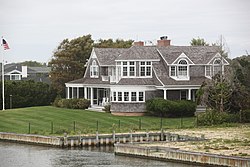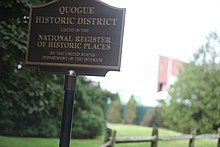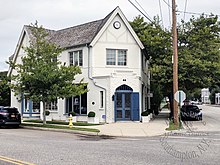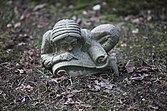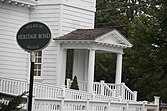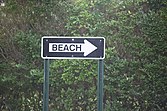
Amagansett is a census-designated place that roughly corresponds to the hamlet by the same name in the Town of East Hampton in Suffolk County, New York, United States, on the South Shore of Long Island. As of the 2010 United States Census, the CDP population was 1,165. Amagansett hamlet was founded in 1680.

Hampton Bays is a hamlet and census-designated place (CDP) in the Town of Southampton in Suffolk County, on Long Island, in New York. It is considered as part of the region of Long Island known as The Hamptons. The population was 13,603 at the 2010 census.

Quogue is a village in the Town of Southampton in Suffolk County, on the South Fork of Long Island, in New York, United States. As of the 2010 United States Census, the population was 967, down from 1,018 at the 2000 census.

Sag Harbor is an incorporated village in Suffolk County, New York, United States, in the towns of Southampton and East Hampton on eastern Long Island. The village developed as a working port on Gardiner's Bay. The population was 2,772 at the 2020 census.
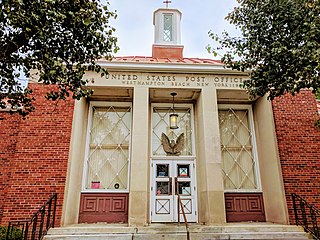
Westhampton Beach is an incorporated village in the Town of Southampton, in Suffolk County, on the South Shore of Long Island, in New York, United States. As of the 2010 census, the population was 1,721.

The Hamptons, part of the East End of Long Island, consist of the towns of Southampton and East Hampton, which together comprise the South Fork of Long Island, in Suffolk County, New York. The Hamptons are a popular seaside resort and one of the historical summer colonies of the northeastern United States.

Southampton is a village in the Town of Southampton in Suffolk County, on the South Fork of Long Island, in New York, United States. The population was 3,109 at the 2010 census.

Southampton, officially the Town of Southampton, is a town in southeastern Suffolk County, New York, partly on the South Fork of Long Island. As of the 2020 U.S. census, the town had a population of 69,036. Southampton is included in the stretch of shoreline prominently known as The Hamptons.

The Town of East Hampton is located in southeastern Suffolk County, New York, at the eastern end of the South Shore of Long Island. It is the easternmost town in the state of New York. At the time of the 2020 United States census, it had a total population of 28,385.
Montauk Highway is an east–west road extending for 95 miles (153 km) across the southern shore of Long Island in Suffolk County, New York, in the United States. It extends from the Nassau County line in Amityville, where it connects to Merrick Road, to Montauk Point State Park at the very eastern end of Long Island in Montauk. The highway is known by several designations along its routing, primarily New York State Route 27A (NY 27A) from the county line to Oakdale and NY 27 east of Southampton. The portion of Montauk Highway between Oakdale and Southampton is mostly county-maintained as County Route 80 and County Route 85.

East Hampton is a station on the Montauk Branch of the Long Island Rail Road, on Railroad Avenue between Newtown Lane and Race Lane, in East Hampton, New York. Parking is available along Railroad Avenue as far west as King Street. A bus/taxi lane is in front of the station house.

Sea Cliff is a station along the Oyster Bay Branch of the Long Island Rail Road. It is located on Sea Cliff Avenue and Glen Keith Road between Glen Cove Avenue and Cedar Swamp Road in the City of Glen Cove, New York, east of the Town of Oyster Bay hamlet of Sea Cliff, New York. The station was actually named after Sea Cliff Avenue, rather than the hamlet.

Southampton is a station on the Montauk Branch of the Long Island Rail Road, on North Main Street between Prospect Street and Willow Street in Southampton, New York.
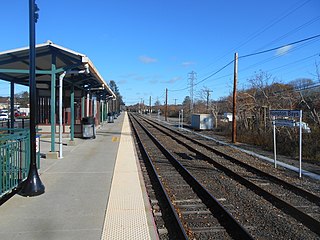
Hampton Bays is a railroad station along the Montauk Branch of the Long Island Rail Road. It is on Good Ground Road between Springville Road and Suffolk CR 32 in Hampton Bays, New York.

Hampton Jitney is a family owned, premier commuter motorcoach company, based in Southampton, NY, operating three primary routes from the east end of Long Island to New York City. Hampton Jitney also operates charter and tour services, along with local transit bus service in eastern Suffolk County under contract with Twin Forks Transit which runs the routes under contract with Suffolk County Transit.
Richmond Hill Historic District is a national historic district in Richmond Hill, Queens, New York. It is bounded to the north by Park Lane South, to the east by 118th Street, to the south by Myrtle Avenue. The district includes 200 contributing buildings built between 1890 and 1915 next to the former South Side Railroad line and the Richmond Hill station at Hillside Avenue, shaped roughly like a triangle. They consist mainly of architectural styles dating back to an earlier time of Academic Eclecticism in home building and were constructed for railroad commuters. Most of the contributing properties were planned as suburbs to Brooklyn and Manhattan. It also included smaller houses built between 1917 and 1930 at the beginning of the Great Depression.
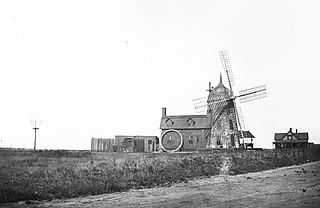
Good Ground Windmill was built in 1807 on the north end of Shelter Island, New York. It was worked as a gristmill on Shelter Island until 1860.
